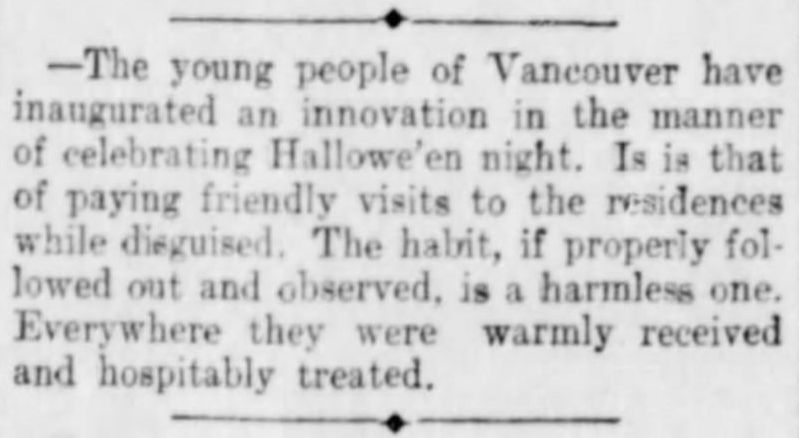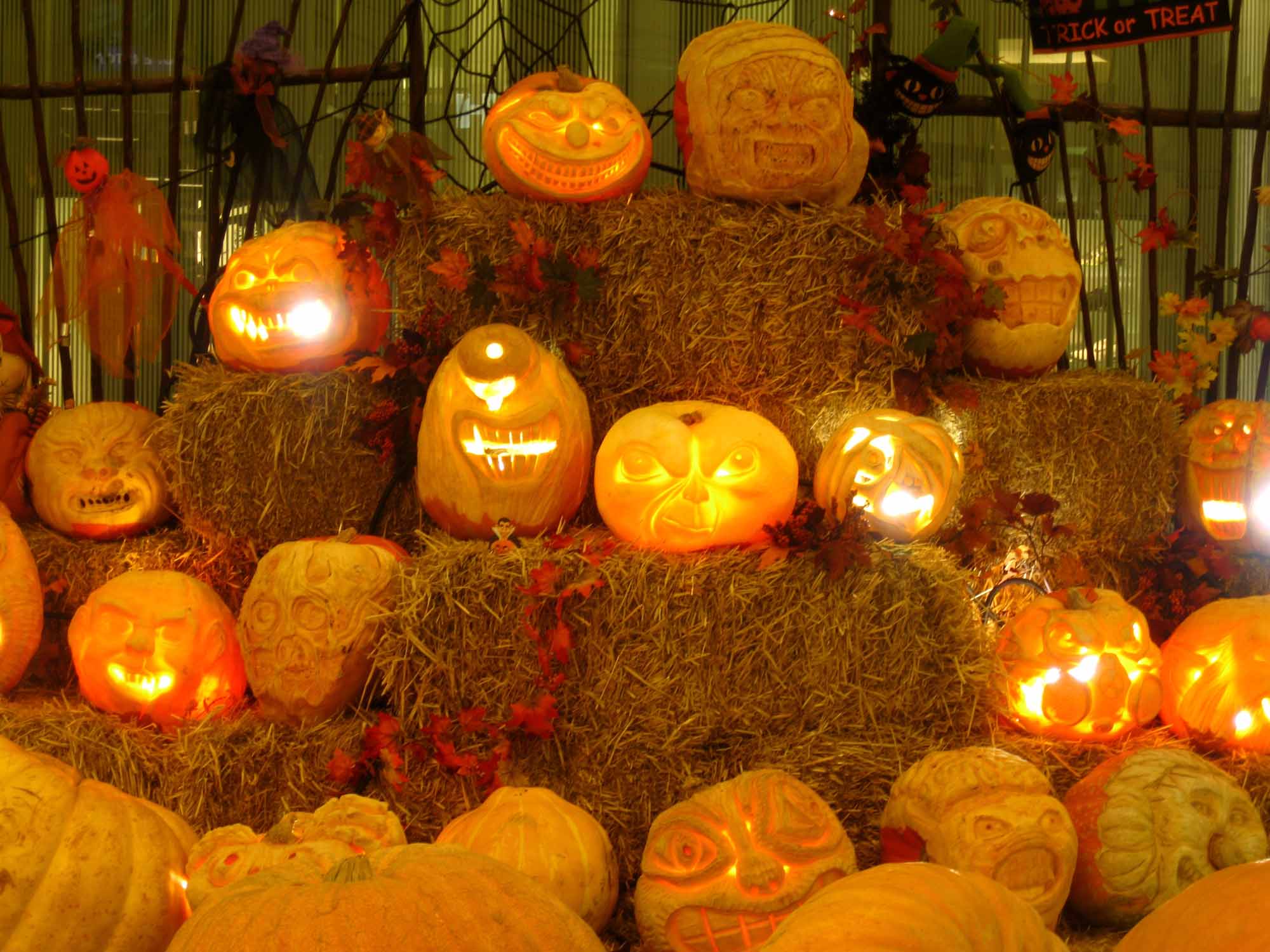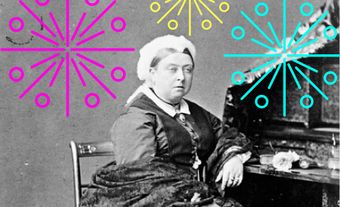Christian Origins of Halloween
There is considerable debate about the origins of Halloween. Many argue that the celebration originated partly in Christianity, specifically All Saints’ Day, the feast day that honours all the saints (or hallows) of the church. The word Halloween has Christian origins and is derived from All Hallows’ Eve, the evening before All Saints’ Day, or All Hallows Day. Such a catch-all celebration became necessary as the calendar became packed with the commemoration of numerous saints and martyrs.
The feast was established in May 609 or 610 by Boniface IV when he consecrated the Roman Pantheon to the Virgin Mary and all martyrs. It was observed on 13 May until Pope Gregory III (731–41) dedicated a chapel of St. Peter’s Basilica to all the saints and changed the feast day to 1 November. In the following century, Pope Gregory IV (827–44) established 1 November as the day that the Feast of All Saints was observed in all Western churches (it is observed on the first Sunday after Pentecost in Eastern churches).
Celtic Origins of Halloween
The customs of Halloween likely derive more from the ancient Celtic festival of Samhain (pronounced SOW-in, with sow as in a female pig), which some argue was appropriated by early Christians to convert the Celtic people. It was observed annually in Britain and Ireland on 1 November, marking the end of the harvest and the beginning of winter. (Samhain means “summer’s end” and is the Gaelic word for November.) Over the centuries, it also came to be recognized as the Celtic New Year, though research suggests this was not originally the case.

Led in their religious practice by Druids (the Celtic clergy), the Celts believed that the beginning of this day — the evening of 31 October — marked the division between the light and dark halves of the year. It was believed to be a spiritually liminal time, when the boundary between the living and the dead was at its thinnest and all manner of ghosts, fairies and demons, including the souls of the dead, were able to visit the living. In some parts of Ireland, Halloween is called Pooky Night, in reference to the púca, an especially mischievous fairy (this is the origin of the word spooky).
In Celtic Halloween customs, people wore costumes and masks to disguise themselves and ward off harmful spirits. The bones of slaughtered animals were cast into communal fires to aid the dead on their journey. People extinguished their home fires and relit them from the bone fire (the origin of today’s bonfire) to celebrate the triumph of light over dark. Meals were prepared for the living and the dead. Ritual offerings were left out to appease malevolent spirits that would otherwise bring bad luck to the home or the community.

The practice of begging for offerings from a household, originally known as souling or mumming, dates back to the Middle Ages and is considered the precursor of the modern practice of trick-or-treating. Beginning around the 15th century, the poor would offer to sing prayers for the souls of a household’s dead in exchange for soul cakes — a form of alms for the dead. As Halloween celebrations grew more secular, this practice was adopted by children. Instead of saying prayers, they would sing songs, recite poems or perform other entertaining tricks in exchange for nuts, fruit or coins. The practice of dressing children in disguise (guising) for souling became common during the 19th century.
Other common Halloween customs included a family dinner followed by parlour games, such as roasting nuts and bobbing for apples to divine one’s future, and a reading of Robert Burns’s 1786 poem Hallowe’en, which describes many other games and customs. Halloween postcards and greeting cards were also very popular between about 1900 and 1940.

Origin of the Jack-o’-lantern
One of the Halloween customs brought to Canada by Scottish and Irish immigrants was the jack-o’-lantern. There is some debate about the origins of this practice; some believe that carved turnips were used as lanterns on Samhain, while others claim that this was an adaptation of the old Christian custom of commemorating souls in purgatory by lighting candles in turnips.
The term jack-o’-lantern is derived from the myth of Stingy Jack, which is believed to have originated in the 17th century. According to Irish folklore, Stingy Jack was a drunkard and a cheat who was refused entry into both heaven (because he was a miser) and hell (because he played tricks on the devil). Stingy Jack was condemned to roam the dimension between the living and the dead until Judgement Day with only an ember from hell to light his way. He kept the ember in a carved-out turnip as a lantern and thus was known as Jack of the lantern, or Jack-o'-Lantern.

In Ireland and Britain, the original jack-o’-lanterns were hollowed-out turnips, beets or potatoes, carved to show a demonic face and lit from the inside by a candle. These vegetables were placed in the window or on the doorstep to frighten away Stingy Jack and other evil spirits. Irish and Scottish immigrants to Canada and the United States brought the custom with them and adapted it to the larger, naturally hollow, native North American pumpkin, which has since become equally popular in Britain.

Pumpkin-carving contests occur all over Canada on or around Halloween, particularly in Nova Scotia, where whole communities compete (e.g., an annual carving contest is held at Kejimkujik National Park).
Halloween and Trick or Treating in Canada
It wasn’t until the massive influx of Irish and Scottish immigrants in the mid-1800s that Halloween celebrations were introduced to Canada. The first recorded instance in North America of children dressing in disguise on Halloween was in Vancouver, BC, in 1898.

The first recorded use of the term trick or treat in North America was in the Lethbridge Herald on 4 November 1927 in reference to festivities in nearby Blackie, Alberta:
Hallowe’en provided an opportunity for real strenuous fun. No real damage was done except to the temper of some who had to hunt for wagon wheels, gates, wagons, barrels, etc., much of which decorated the front street. The youthful tormentors were at back door and front demanding edible plunder by the word “trick or treat” to which the inmates gladly responded and sent the robbers away rejoicing.
Trick or treating, along with the kind of mischief referred to above — which originated in Britain in the late-18th century and came to be associated with the night of 30 October, also known as Devil’s Night — had become commonplace in Canada by the 1920s. Trick or treating waned during the Second World War, due primarily to sugar rations, but was revived with renewed vigour with the rise of the suburbs in the 1950s.
Halloween and UNICEF
The Trick or Treat for UNICEF campaign was initiated on a small scale in Philadelphia in 1947 to help raise money for children in war-torn Europe. Implemented across the United States by UNICEF (United Nations Children’s Fund) in 1950, the program involved giving school children an orange box worn around the neck with which they could collect money from households while trick-or-treating.
The campaign was introduced to Canada in 1955 and discontinued in 2006, when UNICEF Canada shifted its fundraising efforts to its website. The program raised an average of $3 million per year in Canada between 2000 and 2015, and more than $100 million in total during its existence, with proceeds going to the purchase of vaccines, educational materials and other forms of aid for children. The campaign continues to operate door-to-door on Halloween in the US.
Is Canada a haunted place? In this Halloween episode Falen and Leah travel to some of Canada's more obscure haunts. From one of Canada's oldest universities to a former asylum in Quebec to a number of haunted theatres across the country. Leah and Falen seek out what hides in these historical haunts.
Note: The Secret Life of Canada is hosted and written by Falen Johnson and Leah Simone Bowen and is a CBC original podcast independent of The Canadian Encyclopedia.
Commercial Success of Halloween
The popularity of Halloween has grown tremendously since the 1990s, when it morphed from a holiday observed by children to one celebrated by kids and adults alike. The commercial revenue generated by Halloween more than doubled between 2004 and 2014, making the holiday the second-most commercially successful in the world behind Christmas. The Retail Council of Canada estimated in 2014 that Halloween represents a $1-billion industry in Canada. According to a 2014 survey, 68 per cent of Canadians celebrate Halloween and 33 per cent of adults attend a Halloween party. Canadians spend more per capita ($70) on costumes, candy and decorations than Americans. The holiday has also become a flashpoint for controversy, with costumes drawing wide public criticism for sexualizing young girls and depicting racial and ethnic stereotypes.

 Share on Facebook
Share on Facebook Share on X
Share on X Share by Email
Share by Email Share on Google Classroom
Share on Google Classroom





